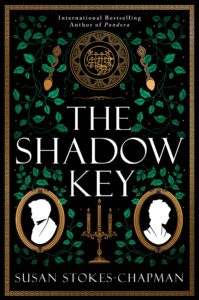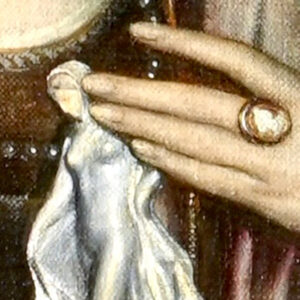If one were to say to any British historian the term ‘Hellfire Club’ they would recognise it instantly, for it was a term synonymous with aristocratic bad-boys (or girls, in some more particular cases!) in the eighteenth-century, all out to indulge in a bit of illicit fun away from the prying and judgemental eyes of reputable society.
Hellfire Clubs were secret societies that emerged in Britain and Ireland, infamous for their debauchery, anti-religious sentiments, and rebellious activities. Such clubs typically composed of wealthy, aristocratic men who sought to specifically flout conventional morality by partaking in long evenings of drinking, gambling, and multiple risqué exploits, either with each other or with hired entertainment.
These clubs originated as a reaction against the strict moral codes of the time, particularly the rise of evangelical movements and the increasing influence of Methodism. The first known Hellfire Club was founded in London circa 1718 by the Duke of Wharton, an eccentric aristocrat and politician. His group – and subsequent clubs like it – were influenced by classical paganism and a broader trend of intellectual and moral rebellion that characterised certain elements of the Enlightenment, which questioned traditional authority, societal norms, and religious dogma.

The Diabolical Maskquerade, or the Dragons-Feast as Acted by The Hell-Fire-Club – Benjamin Cole
The most notorious Hellfire Club was founded by the infamous rake Sir Francis Dashwood, 11th Baron le Despencer, an English politician (yes, another one) and Chancellor of the Exchequer between 1762–1763. Sir Francis founded his group in the 1740s; officially known as the Monks of Medmenham Abbey or the Order of the Friars of St. Francis of Wycombe, his club met at Medmenham Abbey, a former Cistercian monastery near the River Thames. Dashwood’s Hellfire Club is sometimes mistakenly referred to as the first Hellfire Club, because it was the most prominent and infamous of its time.
The club’s members included some very powerful and influential men of the day such as Thomas Potter, the son of the Archbishop of Canterbury; John Wilkes, a radical journalist and politician; and even (allegedly) Benjamin Franklin, the American polymath and, more notably, one of the Founding Fathers of the United States. Their activities were shrouded in secrecy and often exaggerated by rumour, but it was rumoured that meetings typically involved elaborate rituals that parodied religious ceremonies, feasts with copious amounts of food and wine, and entertainments that were sexual in nature; the motto of the club, “Fais ce que tu voudras” (Do what thou wilt), perfectly surmises their libertine philosophy. Members reportedly dressed as monks and nuns, and the gatherings were often themed around classical mythology, particularly revelries dedicated to Bacchus, the Roman god of wine.
The setting itself – Medmenham Abbey – was part of the spectacle. Dashwood leased the abbey and refurbished it to serve as a suitable backdrop for the club’s activities, incorporating Gothic elements, statues of pagan gods, and inscriptions in Latin that hinted at the club’s irreverence towards Christianity. The nearby caves in West Wycombe (now known publicly as the Hellfire Caves), were expanded and used as meeting places, further adding to the mystery of the group.
While the Hellfire Clubs were notorious in their day, their influence waned by the late eighteenth-century. The secrecy and scandal surrounding these clubs – along with changing social values and political landscapes – led to their decline. Public and government scrutiny, compounded by satirical accounts published by figures such as William Hogarth and Jonathan Swift (who called the members a ‘brace of monsters, blasphemers and bacchanalians’), also played a role in their discreditation.

Sir Francis Dashwood at his devotions – William Hogarth
The Hellfire Clubs left a lasting legacy in popular culture and literature, contributing to the archetype of secret societies dedicated to pleasure, excess, and defiance of societal norms. The secrecy of their meetings led to rampant speculation and exaggeration, and consequently inspired numerous myths and legends about hidden rites and libertine gatherings. Some accounts suggest that satanic rituals were part of their activities, but there is little historical evidence to support such claims, and were likely exaggerated by contemporaries who viewed the clubs as a threat to the moral and social order of the time.
My sophomore novel, The Shadow Key (my debut, Pandora, can be found here), explores these more speculative elements of Hellfire Clubs. Set in an imagined area of Wales inspired by where I live, it tells the story of city surgeon Henry Talbot who, after a grave mistake, has been forced to take a position as a doctor in a remote village where he can’t speak the language, and belief in myth and magic is rife. When Henry discovers his predecessor died in mysterious circumstances, and notices an arcane symbol appearing in odd places, he sets out to find answers. He is joined in his investigations by the unconventional lady of the manor, Linette Tresilian, but Linette has suspicions of her own about what’s happened in the village and, together, as they begin to uncover the truth, their destinies become bound together in ways neither Henry or Linette thought possible.
Being set in Wales, this is naturally a novel heavily ingrained in Welsh folklore – anyone who has walked the woodland lanes and mountain paths, and experienced the country’s haunting strangeness and rugged beauty, cannot avoid its folkloric heritage. Wales is called ‘Land of Dragons’ for a reason; here you’ll find stories of King Arthur and his knights, fearsome lake monsters, loyal hounds, mighty giants, and fay folk both pure and mischievous. However, during the course of my initial research, the idea for the novel began to become a little more nuanced – I soon found that eighteenth-century Wales was also a deeply Christian country, and while ordinary folk believed in the ancient tylwyth teg they equally believed in Satan. But for many Englishmen, the advent of the Grand Tour allowed members of the aristocracy to broaden their understanding of other cultures and religious beliefs, and so to include elements of the occult within The Shadow Key while incorporating the notorious Hellfire clubs of the era became an obvious choice, and this cultural shift between the English and Welsh – as well as the tension between such belief systems – was a wonderful juxtaposition, giving me the opportunity to explore religion and superstition through a Georgian lens. Ultimately The Shadow Key became a tale of faith, elitism and exploitation.
I shall leave it up to you whether Julian Tresilian’s own Hellfire club was legitimate in terms of occult practice, or if it was simply an opportunity for members of the aristocratic beau monde to play dress-up and toy with the idea of the supernatural. As Linette’s mother states to Henry, “within each of us there lies a devil”, and so, perhaps, it might be prudent to ask ourselves if the Devil truly exists as a separate entity, or is in fact a construct of our own psyche …
***


















